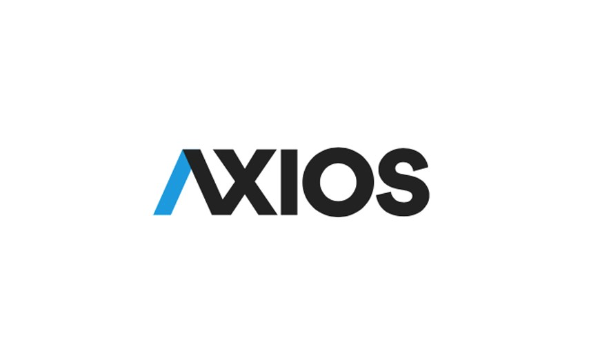/Green%20hydrogen%20by%20Scharfsinn%20via%20Shutterstock.jpg)
Plug Power (PLUG) has been on a tear lately, with shares soaring more than 45% over the past month. This rally followed a surprise two-year extension of the 45V clean hydrogen production tax credit, included in the Senate’s latest revision of President Donald Trump’s massive tax and spending bill, which he signed into law on July 4. For Plug, which has been facing increasing scrutiny over its viability, this move is being hailed as a potential lifeline.
However, even with this renewed wave of optimism, several fundamental concerns still linger beneath the surface. The company’s financial performance remains shaky, with consistently negative gross margins, significant cash burn, and uncertainty surrounding its liquidity. That brings us to the key question: Has anything really changed about Plug Power’s long-term outlook?
In this article, we’ll take a closer look at what’s driving PLUG’s recent rally, assess the impact of the tax credit extension, examine the company’s financial health, and explore whether this momentum can actually be sustained — or if a pullback is looming.
About Plug Power Stock
Plug Power (PLUG) is a notable player in the green hydrogen industry, specializing in hydrogen fuel cell technologies. The company is building a comprehensive green hydrogen ecosystem, spanning production, storage, delivery, and energy generation, to support its customers’ business objectives and contribute to economy-wide decarbonization. Its offerings include the GenDrive fuel cell system for material handling vehicles such as forklifts, GenSure stationary fuel cells for grid support, and ProGen fuel cell engines designed for a range of applications. It also offers GenFuel, a comprehensive solution for hydrogen production, storage, and dispensing. PLUG’s market cap currently stands at $1.69 billion.
Shares of the hydrogen fuel cell product solutions provider have rallied 45% over the past month. The first upside leg took place in early June, driven by Chief Financial Officer Paul Middleton’s decision to purchase additional PLUG shares (he also bought shares in mid-May). The second one came in late June on news of the extension of clean hydrogen tax credits. However, PLUG stock is still down 34% year-to-date.
Tax Credit Drama Ends, But Challenges Remain
On June 30, Plug Power shares jumped more than 28% after the Senate’s latest revision of Trump’s massive tax and spending bill unexpectedly extended the 45V clean hydrogen production tax credit through the end of 2027. The legislation amended an earlier, stricter House version that would have completely eliminated 45V credits for projects beginning after 2025. The U.S. House of Representatives passed the bill last Thursday with a 218-214 vote, and Trump signed it into law on Friday afternoon.
Hydrogen advocates welcomed the Senate’s more moderate stance, describing it as a pragmatic compromise. “Very few projects would have met the 2026 cut-off,” said Frank Wolak, president and CEO of the Fuel Cell and Hydrogen Energy Association (FCHEA), who noted that the two-year extension could trigger a “significant round” of project development. Notably, the 45V clean hydrogen tax credit offers producers up to $3 per kilogram to help make this fuel source competitive with traditional fuels.
In my earlier articles, I pointed to the potential loss of the hydrogen production tax credit after Dec. 31, 2025, as a key factor driving my bearish view on PLUG stock. While I acknowledge that the two-year extension reduces some near-term risks for PLUG, it still falls short of providing enough time to build a healthy business, as clean hydrogen remains a developing technology in an early stage market. Add to that the Trump administration’s skepticism toward renewable energy, and the case for optimism becomes increasingly limited.
In early January, Plug received a loan guarantee of nearly $1.7 billion from the Department of Energy to support six zero- and low-carbon hydrogen production projects. However, the Trump administration has since placed the loan under review, effectively putting it on hold. With the DOE actively cutting funding for clean energy and climate initiatives, there’s a high likelihood that the loan could be withdrawn. And the most crucial point here is that the DOE funds were designated for building new green hydrogen plants for PLUG, which in turn limits the company’s ability to benefit from the tax credit extension.
Finally, if we zoom out, the absence of the tax credit beyond 2027 could restrict the development of future clean hydrogen plants, undermining the industry growth that Plug needs to become profitable. With that, I’m not particularly optimistic about Plug’s long-term outlook at the moment.
Plug’s Core Business Struggles Persist
Putting the tax credit drama aside, another key concern is that Plug continues to struggle financially. In the first quarter of 2025, Plug reported an 11.1% year-over-year increase in sales to $133.7 million, driven by higher electrolyzer deliveries, sustained demand in material handling, and continued deployments within its cryogenic platform. However, the company posted sales declines in every quarter of FY24, including a 42.81% year-over-year drop in Q1 2024. With that, the latest top-line growth came against a relatively weak base.
The company also continues to report significantly negative gross margins, largely due to the structure of its fuel contracts. PLUG’s first-quarter gross margin loss stood at -55%, an improvement from -132% in the same period last year. Still, during the earnings call, management revised its earlier projection of reaching positive gross margins in Q4 2025 and is now aiming to break even by year-end. This isn’t an encouraging sign with the clock ticking toward the 2027 tax credit expiration.
On the expense front, the company cut research and development costs by 31.3% year-over-year to $17.4 million in Q1 due to headcount reductions under the 2025 Restructuring Plan. However, SG&A expenses remained largely unchanged year-over-year at $80.8 million, an uncomfortably high level for a company facing negative gross margins and substantial losses. As a result, the company reported a large net loss of $196.9 million, or $0.21 per share, although this was an improvement from the $295.8 million loss in the previous March quarter.
In terms of liquidity, the company had $295.8 million in unrestricted cash as of March 31. After the quarter ended, Plug secured a costly debt facility of up to $525 million from its existing lender, Yorkville Advisors. The main point here is that the company burned $152.1 million in cash during Q1, despite management implementing a $200 million cost-saving program. This leaves us with an uncertain liquidity outlook beyond 2025.
Looking ahead, management expects Q2 revenue to fall between $140 million and $180 million. At the midpoint, Plug would generate sales just under $300 million for the first half of the year. Analysts currently project the company to post revenue of $734.19 million for FY25, representing 16.76% year-over-year growth, though down from the $972 million estimate at the end of 2024. Its annual net loss is projected to narrow by 78.51% year-over-year to $0.58 per share, though it isn’t expected to reach profitability before fiscal 2030.
What Do Analysts Expect for PLUG Stock?
Wall Street analysts remain cautious on Plug Power stock, as indicated by the consensus “Hold” rating. Among the 23 analysts covering the stock, six rate it as a “Strong Buy,” 13 suggest holding, and the remaining four assign a “Strong Sell” rating. Still, PLUG’s average price target of $1.96 implies an upside potential of 42% from current levels.
The Bottom Line on PLUG Stock
I believe Plug’s recent rally is overblown, and therefore, I do not recommend buying the stock. The company continues to burn significant amounts of cash, post negative gross margins, and face an uncertain liquidity outlook. In other words, the company remains fundamentally challenged even with the hydrogen tax credits.
In my previous article on PLUG, I noted a clear loss of momentum in the stock’s price action at the $1.50 resistance level and highlighted a high probability of a pullback. And that’s exactly what happened — until the news broke about the extension of clean hydrogen tax credits. Now the stock is once again trading below the $1.50 level, but the context is slightly different, as it has approached this level with heavier bullish momentum. This leads me to believe we could see a further move higher, likely into the $1.80–$2.00 range, before the stock begins to pull back. Another scenario is that the stock continues to consolidate below the $1.50 level, forming a double top pattern, and then begins to retreat toward the $1.00 zone. In both cases, I expect the stock to eventually return to its trading range from mid-April to early May, as the company’s fundamentals don’t support a sustained rally.







